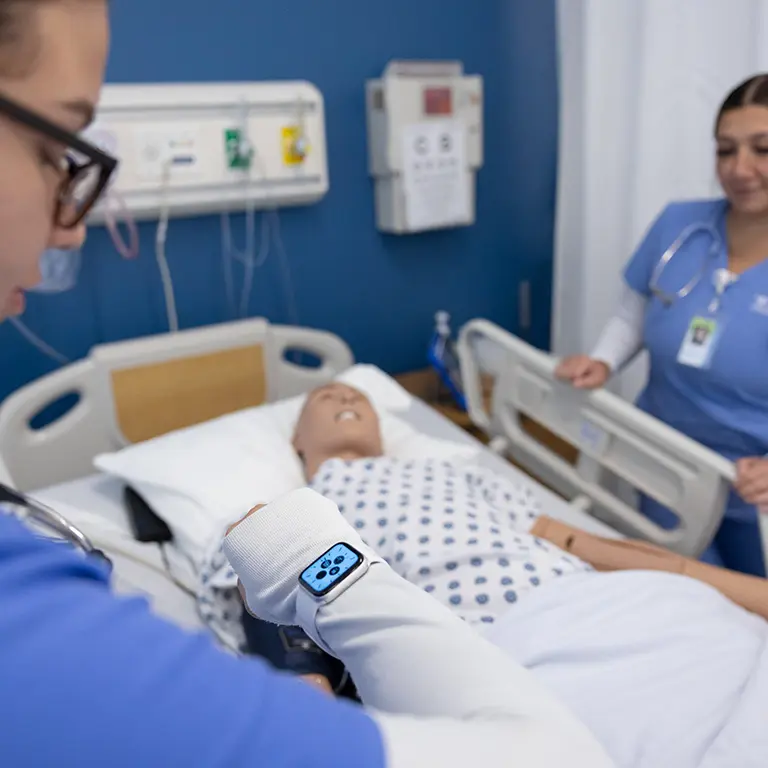Your patients are a variety of infant, child, and adult male and female human patient simulators. You provide care using the same types of equipment nurses use on the job. The human patient simulators can blink, breathe, laugh, cry—showing emotion like any other patient.
One female human patient simulator can give birth in an extremely realistic fashion. Galen scenarios help you practice for uncommon but critical perinatal events like pre-eclampsia.
In the clinical learning and simulation labs, you practice the same procedures you will as a nurse, such as:
- assessing a patient
- providing patient education
- managing the nursing care of a deteriorating patient
- inserting feeding tubes and catheters
- reading heart rhythms
- setting up IVs
One simulation lab day you might train in a labor and delivery situation, and another day in an ICU or ER. A typical simulation day lasts between four and eight hours, depending on the complexity of the simulation.
We design every simulation to feel as real as possible. You perform the procedures just like you would on a real person.
The high-fidelity simulators with a microphone have moulage, special effects makeup, bandages, or wounds as the scenario demands. There is no “pretend” here. If your “patient” is supposed to be bruised, you will see bruises.
To make things even more lifelike, your instructor speaks through the human patient simulator to communicate as a patient would. The condition of the human patient simulator improves or deteriorates, depending on the care you give them.
Students assume the role of nurse making independent clinical decisions during simulation experiences. Your class faculty watch from the control room while managing the simulation and noting your performance.
Immediately after the simulation, the whole class reviews the scenario and discusses choices, outcomes, and processes.
Many students say they learn equally from observing. Remember, once the review portion is complete, what happens in the sim lab stays in the sim lab!








